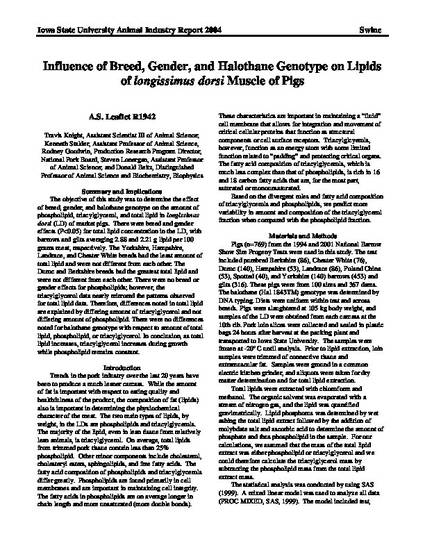
The objective of this study was to determine the effect of breed, gender, and halothane genotype on the amount of phospholipid, triacylglycerol, and total lipid in longissimus dorsi (LD) of market pigs. There were breed and gender effects (P<0.05) for total lipid concentration in the LD, with barrows and gilts averaging 2.88 and 2.21 g lipid per 100 grams meat, respectively. The Yorkshire, Hampshire, Landrace, and Chester White breeds had the least amount of total lipid and were not different from each other. The Duroc and Berkshire breeds had the greatest total lipid and were not different from each other. There were no breed or gender effects for phospholipids; however, the triacylglycerol data nearly mirrored the patterns observed for total lipid data. Therefore, differences noted in total lipid are explained by differing amount of triacylglycerol and not differing amount of phospholipid. There were no differences noted for halothane genotype with respect to amount of total lipid, phospholipid, or triacylglycerol. In conclusion, as total lipid increases, triacylglycerol increases during growth while phospholipid remains constant.
Available at: http://works.bepress.com/kenneth_stalder/21/
